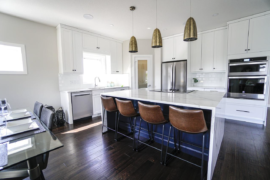
If you’ve decided to invest in a first home, second home, or even to try your hand at real estate investing, you’re going to need to find the right property.
Part of this means knowing what you want from the property. That covers the space you need, location, and even the cost of the property. Don’t forget, you can get some of the best deals on the market by using a good real estate auctioneer Northern Beaches.
Although you will visually inspect any property yourself and may notice some issues. The best idea is to get a professional to do an inspection for you. It’s highly likely that in the excitement you will miss many issues, a professional will be objective and give you a full report. In effect, this will help you to feel confident about your purchase and set the right purchase price.
But, what does a home inspector look at? Knowing this will help you to verify that every part of the property has been checked properly.
Cracks
A building inspector will usually start by inspecting the inside and outside walls. They will be looking for defects and cracks. Not all cracks are something to be concerned about, that’s why need to be looked at by a professional. The depth and width of a crack makes a difference. But, it is also the direction of the crack. Diagonal cracks are often the worse as they will follow the brick line, telling you that part of the property is trying to break away from the rest of it.
You should note that this doesn’t necessarily mean cancelling the purchase. You simply need to be aware of the work involved.
The Roof
A home inspector will take at the roof of your property to decide if there are any issues. Loose tiles can be dangerous if they fall from the roof and may suggest the roof needs to be replaced. But, perhaps, more importantly, a damaged roof allows water into your home. This can soak the wooden beams inside the roof structure and even travel down through the house. It will then create mould issues and the wood can become rotten, potentially causing structural issues.
Plumbing & Electrics
Home inspectors generally take a look at the plumbing and electrics in the property. They will be able to tell you if there are issues that need to be looked at. This is especially useful if you find that the electrical system needs to be completely replaced. It can be a significant expense and will need to be factored into your purchase price.
Additional Issues
House inspectors will also be looking for an array of other issues, such as the presence of hazardous substances. This includes asbestos and lead, materials commonly found in older homes that need to be replaced. In many cases, these items will need to be removed by a professional for safety.
This part of the inspection also notes damp patches, including rising damp.
It should be noted that most home inspections don’t cover pests. It’s worth getting a separate survey done to ensure there are no pest issues;
Paid Guest Post










